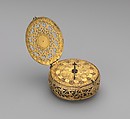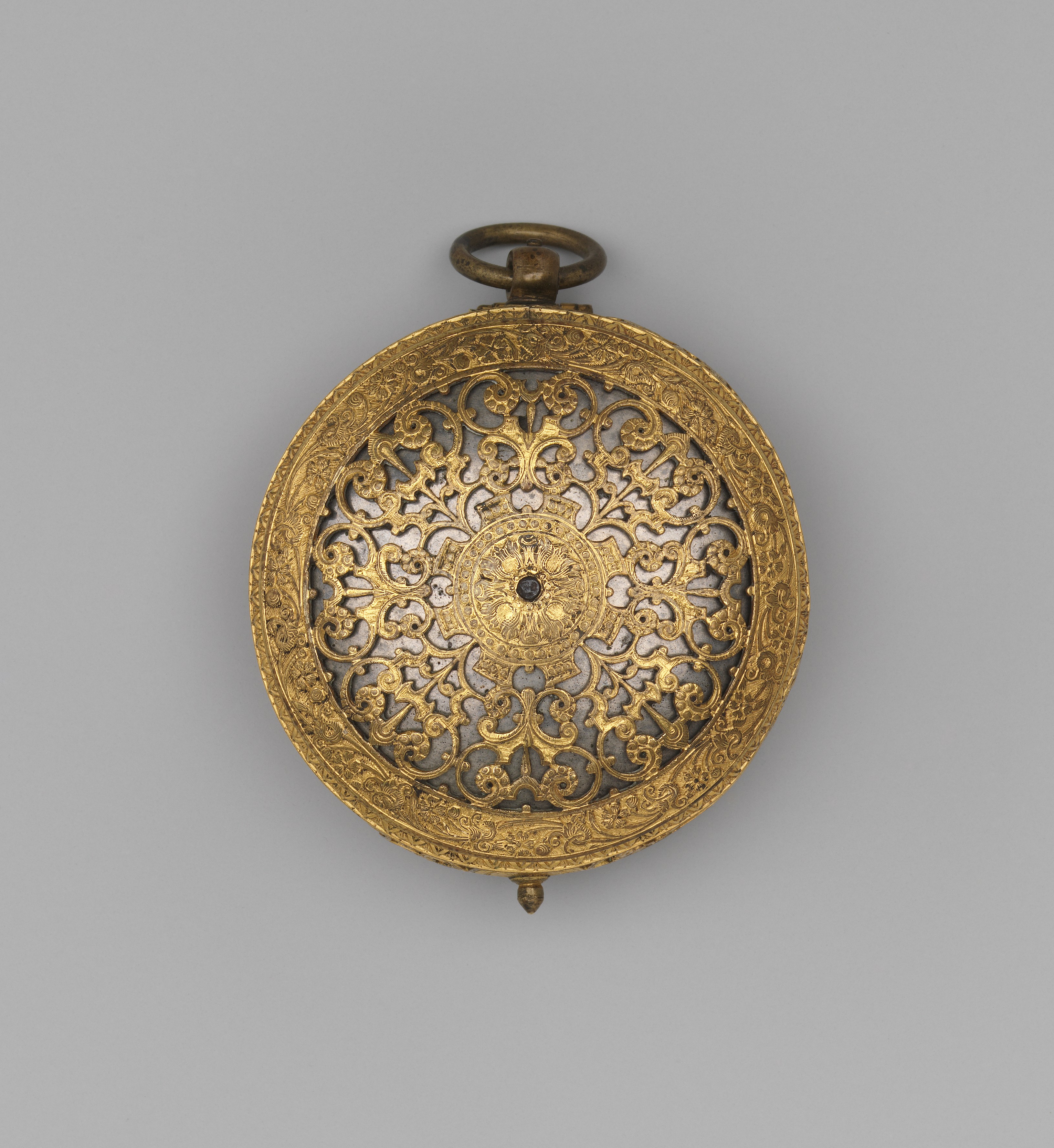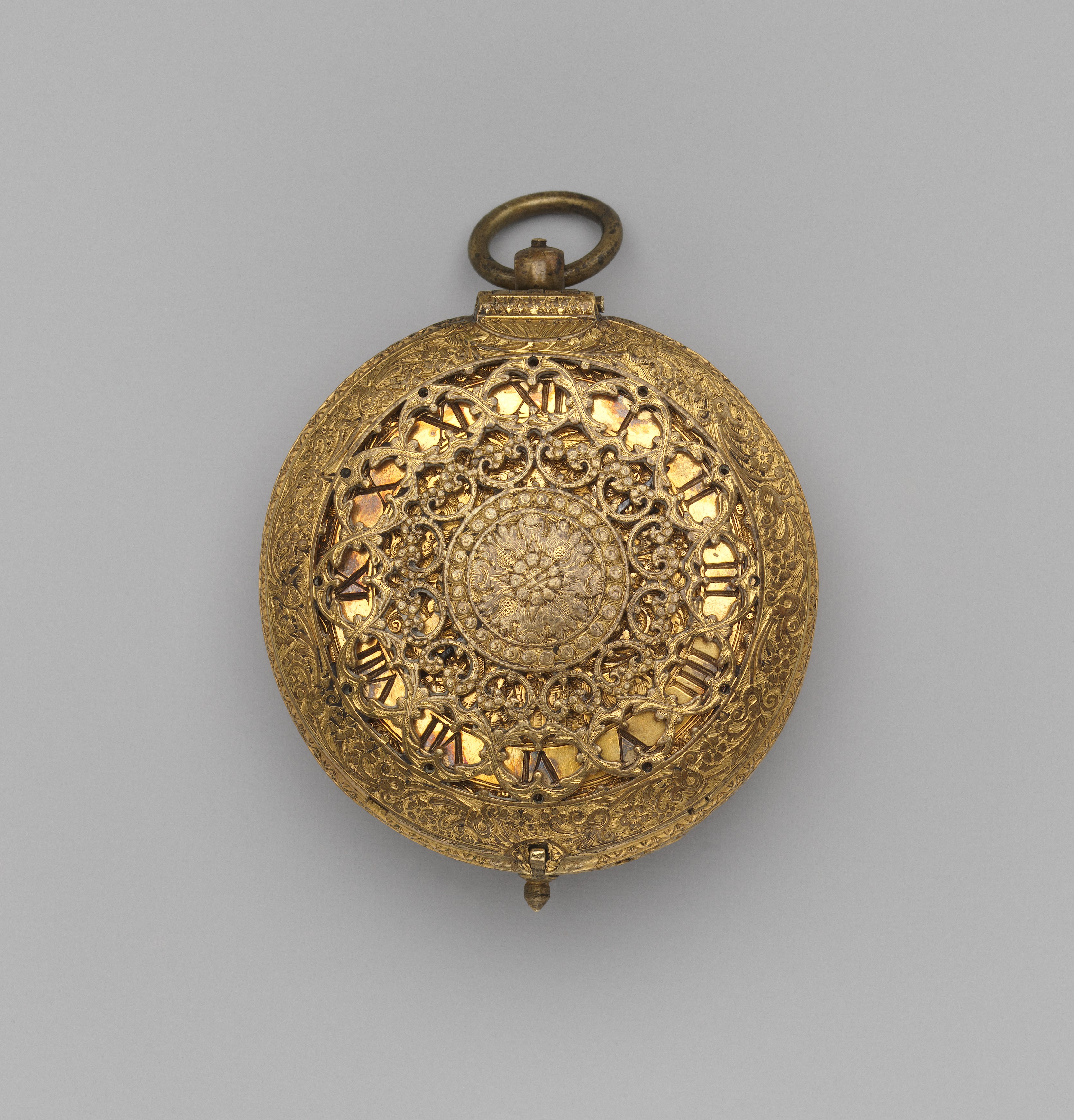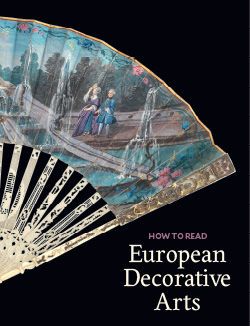Clock watch
Movement by Michael Nouwen, or Nouen Flemish
Not on view
Nouwen was a member of a Flemish family of clockmakers that originated in ’s-Hertogenbosch in Brabant, now a part of The Netherlands. Like the Vallins, he was probably a refugee from political and religious strife. The front plate of Nouwen’s movement is split in two, an unusual feature that makes it possible to remove the wheels of one train of the watch without disturbing the wheels of the other. These clock watches also typically have pierced cases so one could hear the striking of the bell, which is attached to the inside of the case. The intricate piercing and engraving of the metalwork makes this watch as much a piece of jewelry or a display piece as it is a timekeeper. Watches of the period, though nearly always technically cutting-edge, were far from accurate and lacked a minute hand. The female figure in the center of the dial, reminiscent of Flemish personifications of Summer, wears a crown of grain stalks and carries a cornucopia in her right arm.
This image cannot be enlarged, viewed at full screen, or downloaded.
This artwork is meant to be viewed from right to left. Scroll left to view more.






